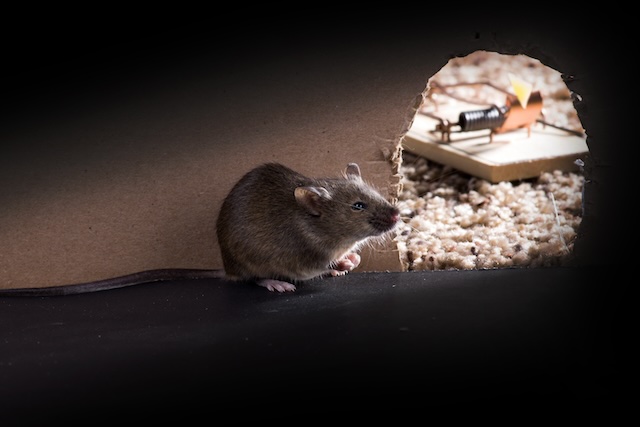Because they are sneaky and flexible, mice can get into homes through a number of different openings. Knowing these common ways for mice to get in is the first step in keeping them out. Let us look at the most common places mice get into your home and how you can make your defences stronger against them.
Gaps Around Doors and Windows: Mice can easily get in through small gaps around doors and windows. Even holes that don’t seem very big can fit the thin bodies of mice. Check the door and window frames, weatherstripping, and seals for holes. Fill them in to make it harder for mice to get in.
**2. Vents and Ventilation Openings: Mice can get into your home through vents in your attic or crawl space and other ventilation openings. Mice can use these holes to get through the walls and into different parts of your home. Putting mesh screens or grates over vents is a good way to keep these pests away.
3. Cracks in the foundation and walls: Mice love to get in through small cracks or holes in the foundation and outside walls of your house. These weaknesses may get worse over time because of settling or aging. Fill in these gaps with the right stuff, like glue or steel wool, to keep mice out.
Access Points for Utility Lines and Pipes: Mice can get into your home through gaps around utility lines, pipes, and ducts. Mice are very good at getting through small areas. Mouse infiltration can be stopped by covering these holes with strong materials. Pay close attention to places where pipes go through floors or walls.
5. Roof and Eaves Entry Points: Rooflines and eaves can be used as entry points, especially if there are branches or plants that hang over and make it easy to get in. Cut back the plants around your house to get rid of these natural bridges. Check the rooflines for holes or gaps and fix them right away.
6. Garage Entry Points: Mice often get into homes through garages that are connected to the house. Look for gaps around the garage doors and in the walls or roof that connect to the main building. Mice can’t get in if you weatherstrip and seal holes in garage doors.
**7. Openings in chimneys: Chimneys that aren’t covered are like signals for mice looking for a place to hide. If your chimney doesn’t have a good cap or mesh covering, it can be used to get right into your home. Make sure the cap on your chimney is on right to keep out mice, birds, and other bugs.
**8. Pet Doors: It’s surprising, but mice can use pet doors as entry points. These doors are helpful for your pet friends, but they can also let in people you don’t want to. Mice can’t get in through pet doors that have seals or automatic closing.
9. Access from Neighbouring Buildings: Mice can get into your home through shared walls if it shares walls with nearby buildings. Work with your neighbours to find and fix any holes or cracks that mice could use to get in.
10. Points of entry to the basement and crawl space:
Mice like to hide in places that are dark and not often used, like basements and crawl spaces. Check these areas often for any gaps or cracks. Make sure that the seals on the entry doors are tight and that the doors are locked.
To keep mice out, you should check your home often, fix problems right away, and strategically seal any openings they might find. Mice are smart, but if you block these common entry points, you will make it much less likely that animals will come to your house. When you combine these efforts with good hygiene, you’ll make a place that mice don’t want to live, which will keep them away.
